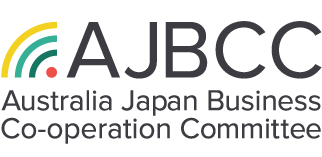04 Aug DFAT’s review of the Japan-Australia Economic Partnership Agreement

As highlighted by the AJBCC’s recent webinar with Senior DFAT Negotiator on Free Trade Agreements Elisabeth Bowes, DFAT is currently undertaking a review of the Japan-Australia Economic Partnership Agreement (JAEPA). The AJBCC is interested in providing a submission to the review. Some background information is outlined below and in the attached analytical paper.
The Japan-Australia Economic Partnership Agreement entered into force on 15 January 2015, with the promise that on full implementation around 98 per cent of Australian merchandise exports to Japan would receive preferential access or enter duty-free. This was of particular significance for agricultural exporters given Japan’s high levels of protection.
Main areas impacted by the JAEPA included agriculture, minerals and energy, manufactured products, services and investment. In all areas of merchandise trade except agriculture, Japanese tariffs were to be completely eliminated by 1 April 2034, and in most areas there was substantial immediate elimination of tariffs. A detailed analysis is available here.
JAEPA coming into force coincided with significant increases in Australian exports to Japan (up from $48.2 billion in 2014 to $57.7 billion in 2019) and Japanese exports to Australia (up from $17.2 billion in 2014 to a peak of $22.8 billion in 2018 before declining in 2019 and 2020). Australian exports to Japan suffered a sharp dip in 2020 to $45.1 billion. However, a fall in coal sales made up a significant proportion of the decline, suggesting that JAEPA was not a factor.
Aggregate figures are of marginal value in determining the impact of Free Trade Agreements – particularly in the case of Australian exports to Japan, where the vast bulk of trade is made up of a small number of bulk commodities in relation to which tariffs are of little or no relevance (over $40 billion of Australia’s total of $53.7 billion in merchandise exports to Japan in 2019-20, or 75 per cent, were LNG, coal and iron ore). More detailed analysis indicates a strong correspondence between JAEPA tariff or quota reductions or eliminations in some areas and increased exports: for example, beef, live cattle, sugar, mandarins and macadamia nuts; as well as in a number of natural resources and manufactured products.
There appears also to be a positive correlation between the introduction of the JAEPA and increased investment and services trade; and at least in the short term with Japanese exports to Australia, with motor vehicle exports (which make up 45 per cent of all Japanese exports) increasing some 22 per cent in value between 2014 and 2018; however these have subsequently fallen back.
In assessing the impact of Free Trade Agreements it is important to understand that correlation does not necessarily mean causation. Nor does a decline in trade necessarily mean the FTA has had no, or a negative, effect: the more salient question is “What would have happened had the FTA not been in place?” Other factors have relevance too – e.g. have other FTAs impacted broader trade patterns (e.g. the Thailand-Australia FTA led to an increase in imports of cars produced by Japanese companies in Thailand which otherwise might have come from Japan); changing purchasing patterns due to pressure for reduced carbon emissions; or, recently, changing trade patterns due to the COVID-19 pandemic.
For these reasons, in reviewing the impact of the FTA, it is important to have qualitative as well as quantitative evidence. The lived experience of companies operating in the market provides vital input. We hope that AJBCC members will be active in putting forward such evidence and their views on how the agreement might usefully be revised. In particular, but without excluding other possibilities, we would like to hear:
- How important has JAEPA been to Australian companies strategically in terms of their engagement with Japan?
- Have there been areas of trade and investment that members have taken advantage of because of changes resulting from the JAEPA?
- Are there areas of potential trade or investment with Japan that are currently not being considered because of real or perceived market barriers that could be addressed through the review?
- Are there areas in which members had previously been availing themselves of liberalisation under the JAEPA but now perceive other agreements (e.g. CPTPP or RCEP) offer greater benefit?
- Are there specific measures that could usefully be taken to assist in developing new areas of trade and investment arising from Japan’s commitment to become carbon-neutral by 2050 (e.g. renewable energy technology, hydrogen)?
Submissions for the review closed 31 August 2021.



